Nicholas Kolokotronis
A Novel Online Incremental Learning Intrusion Prevention System
Sep 20, 2021



Abstract:Attack vectors are continuously evolving in order to evade Intrusion Detection systems. Internet of Things (IoT) environments, while beneficial for the IT ecosystem, suffer from inherent hardware limitations, which restrict their ability to implement comprehensive security measures and increase their exposure to vulnerability attacks. This paper proposes a novel Network Intrusion Prevention System that utilises a SelfOrganizing Incremental Neural Network along with a Support Vector Machine. Due to its structure, the proposed system provides a security solution that does not rely on signatures or rules and is capable to mitigate known and unknown attacks in real-time with high accuracy. Based on our experimental results with the NSL KDD dataset, the proposed framework can achieve on-line updated incremental learning, making it suitable for efficient and scalable industrial applications.
Malware Squid: A Novel IoT Malware Traffic Analysis Framework using Convolutional Neural Network and Binary Visualisation
Sep 08, 2021



Abstract:Internet of Things devices have seen a rapid growth and popularity in recent years with many more ordinary devices gaining network capability and becoming part of the ever growing IoT network. With this exponential growth and the limitation of resources, it is becoming increasingly harder to protect against security threats such as malware due to its evolving faster than the defence mechanisms can handle with. The traditional security systems are not able to detect unknown malware as they use signature-based methods. In this paper, we aim to address this issue by introducing a novel IoT malware traffic analysis approach using neural network and binary visualisation. The prime motivation of the proposed approach is to faster detect and classify new malware (zero-day malware). The experiment results show that our method can satisfy the accuracy requirement of practical application.
* 8 pages, 7 figures, 4 tables
Insider Detection using Deep Autoencoder and Variational Autoencoder Neural Networks
Sep 06, 2021



Abstract:Insider attacks are one of the most challenging cybersecurity issues for companies, businesses and critical infrastructures. Despite the implemented perimeter defences, the risk of this kind of attack is still very high. In fact, the detection of insider attacks is a very complicated security task and presents a serious challenge to the research community. In this paper, we aim to address this issue by using deep learning algorithms Autoencoder and Variational Autoencoder deep. We will especially investigate the usefulness of applying these algorithms to automatically defend against potential internal threats, without human intervention. The effectiveness of these two models is evaluated on the public dataset CERT dataset (CERT r4.2). This version of the CERT Insider Threat Test dataset includes both benign and malicious activities generated from 1000 simulated users. The comparison results with other models show that the Variational Autoencoder neural network provides the best overall performance with a greater detection accuracy and a reasonable false positive rate
* 7 pages, 3 figures, 3 tables
Intrusion Detection using Network Traffic Profiling and Machine Learning for IoT
Sep 06, 2021



Abstract:The rapid increase in the use of IoT devices brings many benefits to the digital society, ranging from improved efficiency to higher productivity. However, the limited resources and the open nature of these devices make them vulnerable to various cyber threats. A single compromised device can have an impact on the whole network and lead to major security and physical damages. This paper explores the potential of using network profiling and machine learning to secure IoT against cyber-attacks. The proposed anomaly-based intrusion detection solution dynamically and actively profiles and monitors all networked devices for the detection of IoT device tampering attempts as well as suspicious network transactions. Any deviation from the defined profile is considered to be an attack and is subject to further analysis. Raw traffic is also passed on to the machine learning classifier for examination and identification of potential attacks. Performance assessment of the proposed methodology is conducted on the Cyber-Trust testbed using normal and malicious network traffic. The experimental results show that the proposed anomaly detection system delivers promising results with an overall accuracy of 98.35% and 0.98% of false-positive alarms.
* 11 pages, 4 figures, 2 tables
CHAINGE: A Blockchain Solution to Automate Payment Detail Updates to Subscription Services
Aug 28, 2021
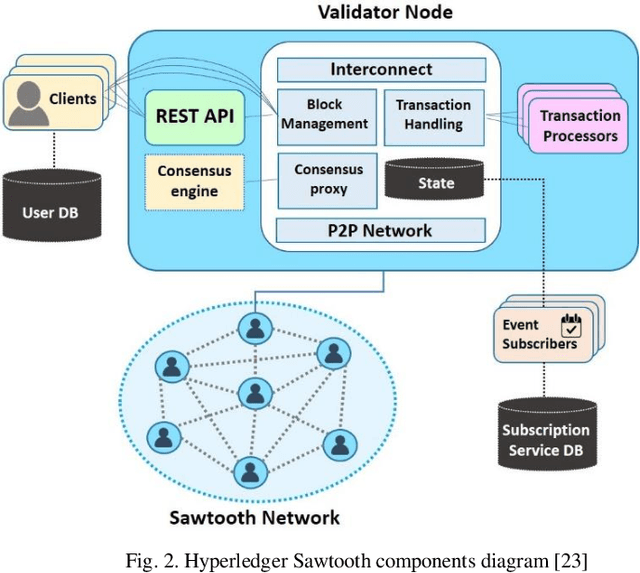

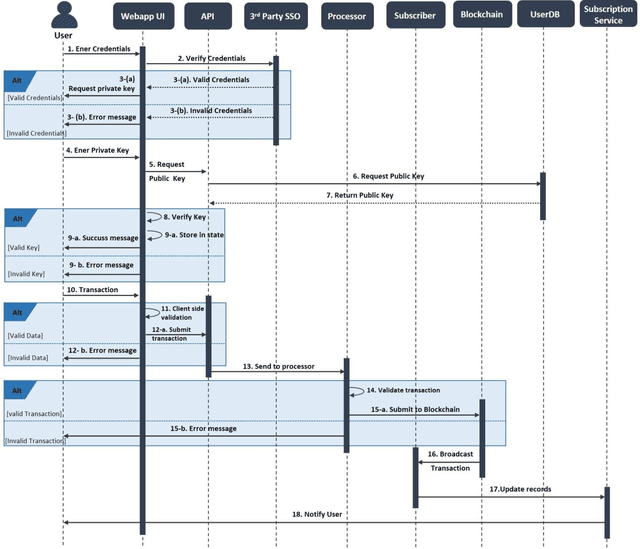
Abstract:The rise of the subscription-based business model has led to a corresponding increase in the number of subscriptions where a customer needs to manage their payments. This management of payments for multiple subscriptions has become a very complicated and insecure task for customers, especially when it comes to renewing payment details when the card is lost, stolen, or expires. In addition, this, mostly manual, process is vulnerable to human error, digital frauds, and data breaches, according to security reports. Thus, in this paper, we propose a novel approach to automate, manage and simplify the Financial Supply Chain involved in the process of updating and managing payments to user subscriptions. This is done by utilising the Hyperledger Sawtooth blockchain framework, that allows a consumer to enter their payment card details in a central digital wallet and link their subscriptions to their cards. The card being updated triggers an event on the blockchain, which allow for the payment details to be updated on subscription systems automatically. The verification tests performed on the prototype of the proposed system shows that its current implementation has been securely achieved.
* 7 pages, 4 figures, 1 table
IoT Malware Network Traffic Classification using Visual Representation and Deep Learning
Oct 04, 2020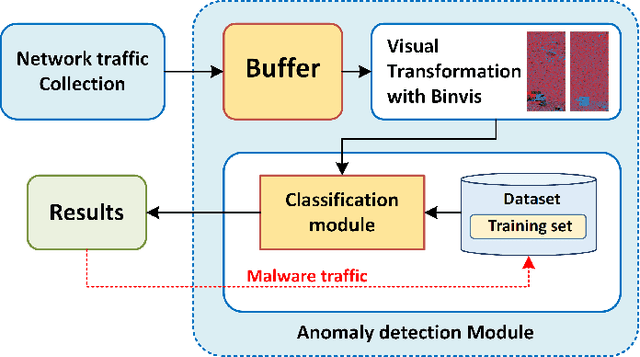
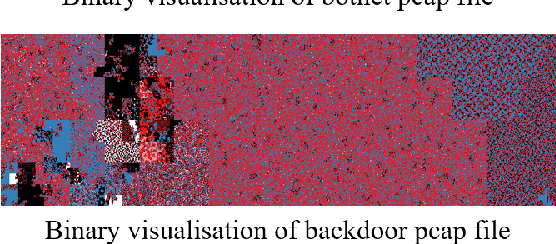
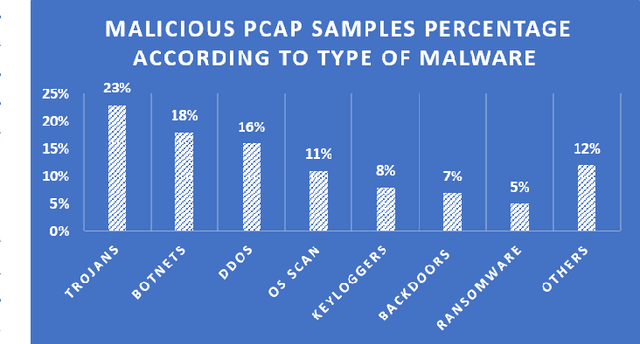
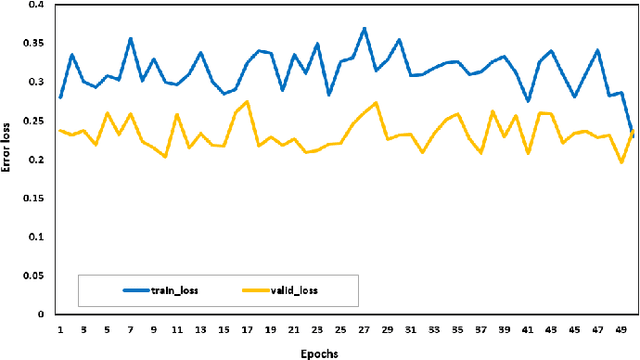
Abstract:With the increase of IoT devices and technologies coming into service, Malware has risen as a challenging threat with increased infection rates and levels of sophistication. Without strong security mechanisms, a huge amount of sensitive data is exposed to vulnerabilities, and therefore, easily abused by cybercriminals to perform several illegal activities. Thus, advanced network security mechanisms that are able of performing a real-time traffic analysis and mitigation of malicious traffic are required. To address this challenge, we are proposing a novel IoT malware traffic analysis approach using deep learning and visual representation for faster detection and classification of new malware (zero-day malware). The detection of malicious network traffic in the proposed approach works at the package level, significantly reducing the time of detection with promising results due to the deep learning technologies used. To evaluate our proposed method performance, a dataset is constructed which consists of 1000 pcap files of normal and malware traffic that are collected from different network traffic sources. The experimental results of Residual Neural Network (ResNet50) are very promising, providing a 94.50% accuracy rate for detection of malware traffic.
* 10 pages, 5 figures, 2 tables
 Add to Chrome
Add to Chrome Add to Firefox
Add to Firefox Add to Edge
Add to Edge